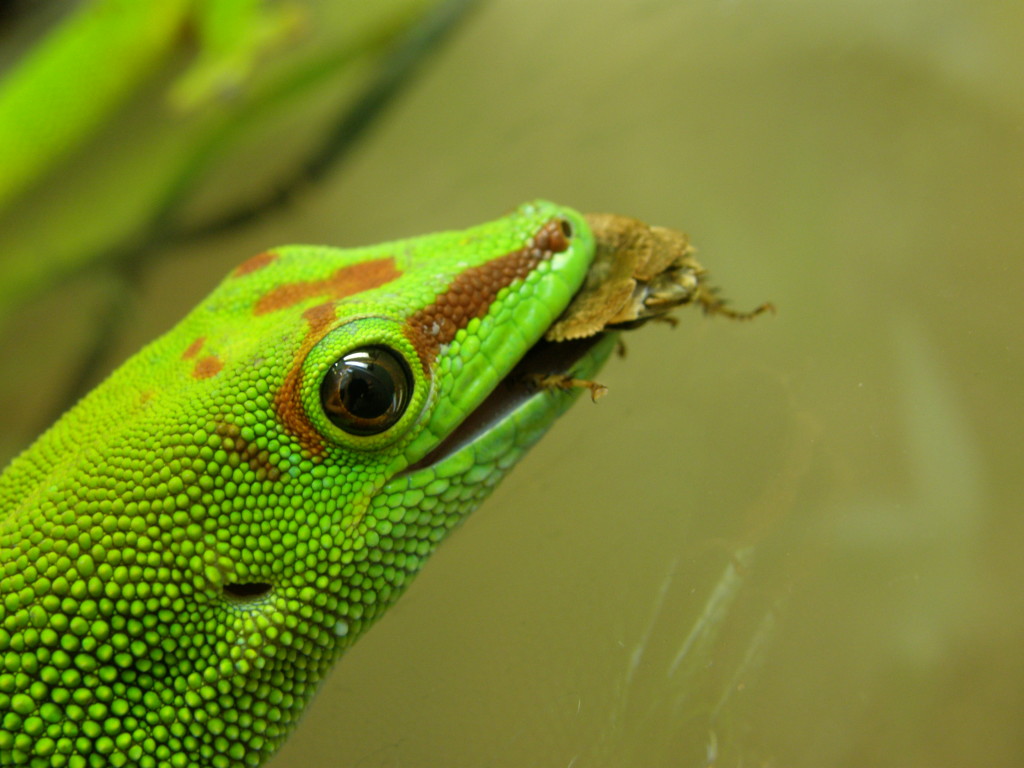Guidelines on insects
Many beginner exotic pet owners find themselves facing the problems of feeder insects. Whether the pet is a lizard, spider or insectivorous mammal the main questions remain the same. Where do I get insects from? Which insect species to choose? How to take care of the insects before feeding them to the pet? How to breed your own feeder insects? This article will try to answer these questions.
When going to a well-stocked pet store you can find yourself facing a big selection of insects. To make the best choice, you should first know the needs of your pet. For the main food source you should select insects with high nutritional values, such as crickets, grasshoppers or cockroaches. As a treat you can choose mealworms, zophobases, wax worms or other larvae, that will excite even the fussiest pets. But you have to keep in mind, that worms are usually very fatty and contain less of useful nutrients. In addition they flush out calcium of your pets system. Because of that, worms should be viewed as hamburgers of insect world: once in a while it is ok, but as a main diet a definite no. As a rule, you should feed softer insects to geckos, like crickets or softer cockroaches. To agamas you should feed hard-shelled insects with low fat content, for example bigger and harder cockroaches. This will keep their intestines healthy and prevent big eaters like bearded dragons from becoming fat.
In addition to insect species, you also have to select a correct size. Too big insects can be hazardous to your pet and cause choking. Too small insects are needed in larger quantities and some lazier pets won’t even bother to eat anything that is too small. There are multiple ways of determining the correct size of the insect. As a rule for agamas, you have to consider the size of their heads. Draw an imaginary triangle from the tip of the nose to the behind of the eyes. Correctly sized feeder insect should fit into that triangle.
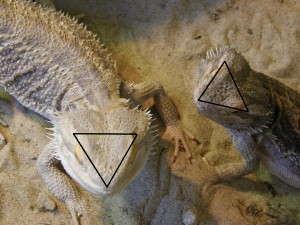
For most geckos, you can determine the length of the insect by looking at their forelimb. Appropriate length of the insect is the distance between the elbow and the toe tips.
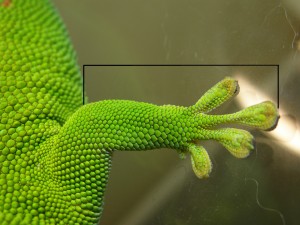
For spiders, safe rule is that pray needs to be smaller than the body of a spider.
In addition you can also use individual approach for your pets by observing how they eat. For example if your lizard swallows the insect very quickly and with almost no chewing, it was probably too small. But if your pet is having hard time with it and is chewing it a lot before swallowing, the insect is probably too big.
When bringing insects home, you should put them into a well-ventilated but escape-proof box and before feeding them to your pet, you should gut load them with vitamin rich food. You can find special insect foods from pet stores for that.
Do you want to breed the insects yourself? Choose a species that suits your pet and is easy to breed, but that wouldn’t start breeding in your home if some escape.
Crickets
Good: favourite food of most pets; breed fast and numerously; can’t climb smooth surfaces.
Bad: noisy; jump; bite/chew (can harm your pet when left in terrarium for too long); choosy about food.
Lobster Cockroach, Nauphoeta cinerea
Good: breed fast; easy to breed; eat almost anything; many pets like them.
Bad: can climb smooth surfaces; can start to breed on their own in older and more humid wooden houses.
Turkistan Cockroach, Blatta (Shelfordella) lateralis
Good: soft; many pets like them; breed fast; can’t climb smooth surfaces.
Bad: fast; males jump; need high humidity; smelly.
Madagascar hissing cockroach (Gromphadorhina portentosa)
Good: many different sizes (hatch small and progressively grow very big); breed well; meaty.
Bad: can climb smooth surfaces; grow slowly; some pets get tired of them quickly.
Blaptica dubia
Good: can’t climb smooth surfaces; grow large; prolific.
Bad: real burrowers(will hide in substrate); mature slowly; picky eaters.
Example of breeding Lobster Cockroach
You will need a box sized at least 35cm x 25cm x 15cm (length-width-height), preferably plastic
No substrate is needed. Drill lots of holes in the lid of the box or use screened lid. Spread vaseline onto the top 7cm strip of the inner walls to make them climb-proof.
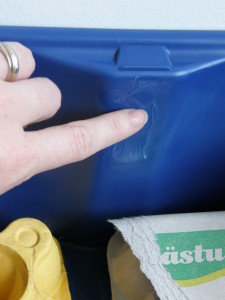
Place some egg crates made of paper in the box for hiding places, but make sure you don’t stack them too high so that insects could reach the lid.
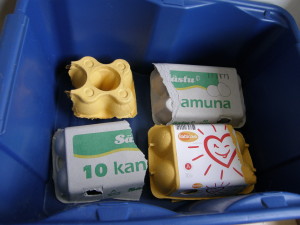
Choose a complex-food for feeding, for example dry dog food, pig food or fish food. In addition provide fresh food like slices of potato, carrot, apple or cucumber, cabbage leaves etc. But don’t give too much because fresh food contains lots of water and high humidity can cause mold to start growing which can kill the whole population in the box. Remember, what you feed to your insects, ends up in your pet, so feed them well!
Keep the container in dark and warm place. Temperatures should be around 25-30C. The warmer you keep them, the faster they are going to breed.
Once in a while it is necessary to clean the box (carton pieces, old insect shells etc). Easiest way to do it is to shift all the egg cartons to one side of the box and let the insects hide under them. Use a small shovel or a fittingly sized spoon to lift out all the stuff gathered on the floor. Now move the egg cartons to the other side and repeat the process. It is advisable to put the removed stuff into a small plastic bag that can be tied up right after and taken out of the house, since if you happen to scoop up some small insects, you wouldn’t want them to start living in your home recycle bin. Make sure you freshen the vaseline strip also once in a while to make sure no insects can escape.
To prevent diseases, keep your colony warm, clean and well ventilated.
